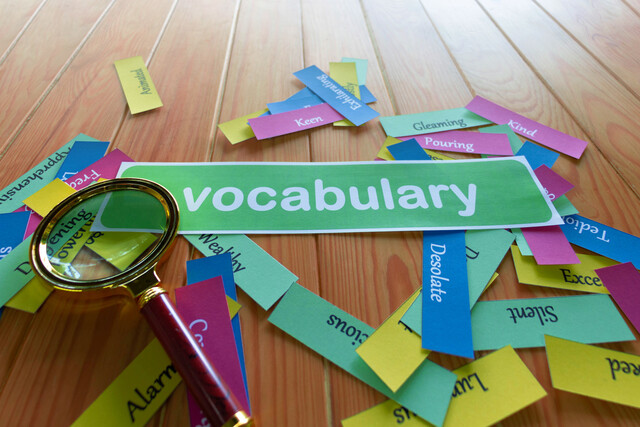Online Class: ESL Grammar Skills Level 1

no certificate
with CEU Certificate*
-
32Lessons
-
83Exams &
Assignments -
4,065Students
have taken this course -
12Hours
average time -
1.2CEUs
Course Description
ESL Grammar Skills Mastery: Embark on Your English Journey with Level 1
Embarking on the adventure of mastering a new language, especially English, is both exhilarating and challenging. Tailored precisely for those taking their initial steps in this voyage, our 'ESL Grammar Skills Level 1' is the perfect starting point. Crafted meticulously for English as a Second Language (ESL) learners, this course ensures that every nuance, every rule, is presented in a manner that resonates with your unique learning journey.
At Level 1, we lay down the foundational bricks of English grammar. Delve deep into the world of tenses, specifically focusing on the intricacies of present simple and past simple. From there, we'll guide you through the captivating realm of verbs, spotlighting their diverse forms and functions.
Here's a peek into our holistic course offerings:
- Dancing with Verbs: Unearth the magic of verbs, including the dynamic '-ing' form, and unravel the peculiarities of 'be' verbs, distinguishing them from their counterparts.
- Nouns & More: Dive into plurals, discern the significance of articles 'a' and 'an', and embrace the art of using adjectives to paint vivid linguistic pictures.
- Pronouns & Demonstratives: Master subject pronouns, possessive adjectives, and the subtle nuances of using 'this/that/these/those'.
- Prepositions & Beyond: Decode the world of prepositions, especially those defining place and time, while also tackling the essential 'wh-' questions and understanding the frequency-driven adverbs.
- Sentence Structuring: Craft simple (S-V-O) and compound sentences, ensuring your thoughts flow smoothly in English.
- Irregularities in English: Navigate the fascinating domain of irregular spellings, plurals, gerunds, and verb formations.
Beyond grammar, we infuse our course with a comprehensive writing component. With 33 enriching lessons, each supplemented with vivid illustrations, exhaustive exercises, and section-specific exams, the journey becomes as immersive as it is instructive. Moreover, we've incorporated state-of-the-art audio-visual aids, including High-Definition videos for every lesson. These videos serve a dual purpose: enhancing your understanding and fine-tuning your listening comprehension and pronunciation.
By the culmination of this course, you'll have forged a sturdy foundation in English. While the linguistic expanse you'll navigate may be foundational, it'll empower you to articulate the majority of your thoughts and ideas. So, whether you're just starting your English journey or seeking to rejuvenate your foundational skills, our Level 1 offering stands as an invaluable resource.
Dive in, and let's co-create your English story, one grammatical rule at a time!
- Completely Online
- Self-Paced
- 6 Months to Complete
- 24/7 Availability
- Start Anytime
- PC & Mac Compatible
- Android & iOS Friendly
- Accredited CEUs

Course Lessons
Lesson 1. Mastering Subject Pronouns: A Foundational Guide
 Lesson 1 Video
Lesson 1 Video Review Practice Worksheet: Lesson-1-WorkSheet-17312.pdf
Review Practice Worksheet: Lesson-1-WorkSheet-17312.pdf Lesson discussions: Reasons for Taking this Course
Lesson discussions: Reasons for Taking this Course Complete Assignment: Practice Exercise 1
Complete Assignment: Practice Exercise 1
Lesson 2. Building Blocks of English Sentences: Subject, Verb, and Object
 Lesson 2 Video
Lesson 2 Video Review Practice Worksheet: Lesson-2-Activity-17315.pdf
Review Practice Worksheet: Lesson-2-Activity-17315.pdf Complete Assignment: Practice Exercise 2
Complete Assignment: Practice Exercise 2
Lesson 3. Third Person Singular: The Verb 'Be' in Action
 Lesson 3 Video
Lesson 3 Video Review Practice Worksheet: Lesson-3-WordSearch-17318.pdf
Review Practice Worksheet: Lesson-3-WordSearch-17318.pdf Complete Assignment: Practice Exercise 3
Complete Assignment: Practice Exercise 3 Assessment: Lesson 3 Exam
Assessment: Lesson 3 Exam
Lesson 4. Crafting Sentences: Adjectives and Nouns Combined
 Lesson 4 Video
Lesson 4 Video Review Practice Worksheet: Lesson-4-Downloadable-17320.pdf
Review Practice Worksheet: Lesson-4-Downloadable-17320.pdf Complete Assignment: Practice Exercise 4
Complete Assignment: Practice Exercise 4 Assessment: Lesson 4 Exam
Assessment: Lesson 4 Exam
Lesson 5. Mastering 'Was' and 'Wasn't' with He, She, It
 Lesson 5 Video
Lesson 5 Video Review Practice Worksheet: Lesson-5-Downloadable-17323.pdf
Review Practice Worksheet: Lesson-5-Downloadable-17323.pdf Complete Assignment: Practice Exercise 5-1
Complete Assignment: Practice Exercise 5-1 Complete Assignment: Practice Exercise 5-2
Complete Assignment: Practice Exercise 5-2
Lesson 6. Exploring Prepositions: Spatial Relationships with In, On, Under, and More
 Lesson 6 Video
Lesson 6 Video Review Practice Worksheet: Lesson-6-WordSearch-17325.pdf
Review Practice Worksheet: Lesson-6-WordSearch-17325.pdf Complete Assignment: Practice Exercise 6-1
Complete Assignment: Practice Exercise 6-1 Complete Assignment: Practice Exercise 6-2
Complete Assignment: Practice Exercise 6-2
Lesson 7. Navigating Adjectives, Nouns, and Prepositional Phrases with 'Be'
 Lesson 7 Video
Lesson 7 Video Review Practice Worksheet: Lesson-7-HomeWork-17328.pdf
Review Practice Worksheet: Lesson-7-HomeWork-17328.pdf Complete Assignment: Practice Exercise 7-1
Complete Assignment: Practice Exercise 7-1 Complete Assignment: Practice Exercise 7-2
Complete Assignment: Practice Exercise 7-2 Complete Assignment: Practice Exercise 7-3
Complete Assignment: Practice Exercise 7-3 Complete Assignment: Practice Exercise 7-4
Complete Assignment: Practice Exercise 7-4
Lesson 8. Grammar in Action: Using Possessive Adjectives
 Lesson 8 Video
Lesson 8 Video Review Practice Worksheet: Lesson-8-WorkSheet-17331.pdf
Review Practice Worksheet: Lesson-8-WorkSheet-17331.pdf Complete Assignment: Practice Exercise 8-1
Complete Assignment: Practice Exercise 8-1 Complete Assignment: Practice Exercise 8-2
Complete Assignment: Practice Exercise 8-2
Lesson 9. Understanding Articles: A and An in English Grammar
 Lesson 9 Video
Lesson 9 Video Review Practice Worksheet: Lesson-9-WorkSheet-17333.pdf
Review Practice Worksheet: Lesson-9-WorkSheet-17333.pdf Complete Assignment: Practice Exercise 9
Complete Assignment: Practice Exercise 9 Assessment: Lesson 9 Exam
Assessment: Lesson 9 Exam
Lesson 10. Understanding English Plurals: Formation and Rules
 Lesson 10 Video
Lesson 10 Video Review 2 Practice Worksheets
Review 2 Practice Worksheets Complete Assignment: Practice Exercise 10-1
Complete Assignment: Practice Exercise 10-1 Complete Assignment: Practice Exercise 10-2
Complete Assignment: Practice Exercise 10-2 Complete Assignment: Practice Exercise 10-3
Complete Assignment: Practice Exercise 10-3 Complete Assignment: Practice Exercise 10-4
Complete Assignment: Practice Exercise 10-4
Lesson 11. Understanding When to Use -s: Present Simple Verbs for He/She/It
 Lesson 11 Video
Lesson 11 Video Review 2 Practice Worksheets
Review 2 Practice Worksheets Complete Assignment: Practice Exercise 11-1
Complete Assignment: Practice Exercise 11-1 Complete Assignment: Practice Exercise 11-2
Complete Assignment: Practice Exercise 11-2 Complete Assignment: Practice Exercise 11-3
Complete Assignment: Practice Exercise 11-3
Lesson 12. Present Simple: Building Strong Foundations
 Lesson 12 Video
Lesson 12 Video Review Practice Worksheet: Lesson-12-WordSearch-17341.pdf
Review Practice Worksheet: Lesson-12-WordSearch-17341.pdf Complete Assignment: Practice Exercise 12-1
Complete Assignment: Practice Exercise 12-1 Complete Assignment: Practice Exercise 12-2
Complete Assignment: Practice Exercise 12-2 Complete Assignment: Practice Exercise 12-3
Complete Assignment: Practice Exercise 12-3
Lesson 13. Exploring Negations and Descriptions: Understanding 'Not' with Mary and Others
 Lesson 13 Video
Lesson 13 Video Review Practice Worksheet: Lesson-13-Downloadable-17343.pdf
Review Practice Worksheet: Lesson-13-Downloadable-17343.pdf Complete Assignment: Practice Exercise 13-1
Complete Assignment: Practice Exercise 13-1 Complete Assignment: Practice Exercise 13-2
Complete Assignment: Practice Exercise 13-2 Assessment: Lesson 13 Exam
Assessment: Lesson 13 Exam
Lesson 14. Exploring Negations in English: From Phrases to Sentences
 Lesson 14 Video
Lesson 14 Video Review Practice Worksheet: Lesson-14-WordSearch-17346.pdf
Review Practice Worksheet: Lesson-14-WordSearch-17346.pdf Complete Assignment: Practice Exercise 14-1
Complete Assignment: Practice Exercise 14-1 Complete Assignment: Practice Exercise 14-2
Complete Assignment: Practice Exercise 14-2 Assessment: Lesson 14 Exam
Assessment: Lesson 14 Exam
Lesson 15. Adventures with 'Ago' and the Past Tense
 Lesson 15 Video
Lesson 15 Video Review Practice Worksheet: Lesson-15-HomeWork-17348.pdf
Review Practice Worksheet: Lesson-15-HomeWork-17348.pdf Complete Assignment: Practice Exercise 15
Complete Assignment: Practice Exercise 15
Lesson 16. Pairing Sentences with Their Question Twins
 Lesson 16 Video
Lesson 16 Video Review Practice Worksheet: Lesson-16-HomeWork-17351.pdf
Review Practice Worksheet: Lesson-16-HomeWork-17351.pdf Complete Assignment: Practice Exercise 16-1
Complete Assignment: Practice Exercise 16-1 Complete Assignment: Practice Exercise 16-2
Complete Assignment: Practice Exercise 16-2 Assessment: Lesson 16 Exam
Assessment: Lesson 16 Exam
Lesson 17. Understanding Wh- Question Words
 Lesson 17 Video
Lesson 17 Video Review Practice Worksheet: Lesson-17-WordSearch-17353.pdf
Review Practice Worksheet: Lesson-17-WordSearch-17353.pdf Complete Assignment: Practice Exercise 17-1
Complete Assignment: Practice Exercise 17-1 Complete Assignment: Practice Exercise 17-2
Complete Assignment: Practice Exercise 17-2 Assessment: Lesson 17 Exam
Assessment: Lesson 17 Exam
Lesson 18. Playing with Negatives: The 3rd Person Singular Edition
 Lesson 18 Video
Lesson 18 Video Review Practice Worksheet: Lesson-18-Downloadable-17356.pdf
Review Practice Worksheet: Lesson-18-Downloadable-17356.pdf Complete Assignment: Practice Exercise 18
Complete Assignment: Practice Exercise 18 Assessment: Lesson 18 Exam
Assessment: Lesson 18 Exam
Lesson 19. Exploring Third Person Singular Questions: A Comprehensive Guide
 Lesson 19 Video
Lesson 19 Video Review Practice Worksheet: Lesson-19-WordSearch-17358.pdf
Review Practice Worksheet: Lesson-19-WordSearch-17358.pdf Complete Assignment: Practice Exercise 19-1
Complete Assignment: Practice Exercise 19-1 Complete Assignment: Practice Exercise 19-2
Complete Assignment: Practice Exercise 19-2 Complete Assignment: Practice Exercise 19-3
Complete Assignment: Practice Exercise 19-3 Assessment: Lesson 19 Exam
Assessment: Lesson 19 Exam
Lesson 20. Mastering Negatives and Questions: A Comprehensive Third Person Singular Review
 Lesson 20 Video
Lesson 20 Video Review Practice Worksheet: Lesson-20-Downloadable-17361.pdf
Review Practice Worksheet: Lesson-20-Downloadable-17361.pdf Complete Assignment: Practice Exercise 20-1
Complete Assignment: Practice Exercise 20-1 Assessment: Lesson 20 Exam
Assessment: Lesson 20 Exam
Lesson 21. Interrogative Practice: Turning Statements into Questions
 Lesson 21 Video
Lesson 21 Video Review Practice Worksheet: Lesson-21-Downloadable-17364.pdf
Review Practice Worksheet: Lesson-21-Downloadable-17364.pdf Complete Assignment: Practice Exercise 21-2
Complete Assignment: Practice Exercise 21-2 Complete Assignment: Practice Exercise 21-1
Complete Assignment: Practice Exercise 21-1 Assessment: Lesson 21 Exam
Assessment: Lesson 21 Exam
Lesson 22. Navigating Abilities: Lessons in 'Can' and 'Can't'
 Lesson 22 Video
Lesson 22 Video Review Practice Worksheet: Lesson-22-HomeWork-17366.pdf
Review Practice Worksheet: Lesson-22-HomeWork-17366.pdf Complete Assignment: Practice Exercise 22-1
Complete Assignment: Practice Exercise 22-1 Complete Assignment: Practice Exercise 22-2
Complete Assignment: Practice Exercise 22-2 Assessment: Lesson 22 Exam
Assessment: Lesson 22 Exam
Lesson 23. Timeless Tenses: Navigating Regular Verb Past Forms
 Lesson 23 Video
Lesson 23 Video Review 2 Practice Worksheets
Review 2 Practice Worksheets Complete Assignment: Practice Exercise 23-1
Complete Assignment: Practice Exercise 23-1 Complete Assignment: Practice Exercise 23-2
Complete Assignment: Practice Exercise 23-2 Assessment: Lesson 23 Exam
Assessment: Lesson 23 Exam
Lesson 24. Irregular Verbs Past Tense
 Lesson 24 Video
Lesson 24 Video Review 2 Practice Worksheets
Review 2 Practice Worksheets Complete Assignment: Practice Exercise 24-1
Complete Assignment: Practice Exercise 24-1 Complete Assignment: Practice Exercise 24-2
Complete Assignment: Practice Exercise 24-2 Assessment: Lesson 24 Exam
Assessment: Lesson 24 Exam
Lesson 25. Quick Guide to Irregular Verbs (2)
 Lesson 25 Video
Lesson 25 Video Review 2 Practice Worksheets
Review 2 Practice Worksheets Complete Assignment: Practice Exercise 25-1
Complete Assignment: Practice Exercise 25-1 Complete Assignment: Practice Exercise 25-2
Complete Assignment: Practice Exercise 25-2 Assessment: Lesson 25 Exam
Assessment: Lesson 25 Exam
Lesson 26. Exploring the Simple Past: Crafting Questions and Negatives
 Lesson 26 Video
Lesson 26 Video Review Practice Worksheet: Lesson-26-Downloadable-17377.pdf
Review Practice Worksheet: Lesson-26-Downloadable-17377.pdf Complete Assignment: Practice Exercise 26
Complete Assignment: Practice Exercise 26 Assessment: Lesson 26 Exam
Assessment: Lesson 26 Exam
Lesson 27. The Art of Compound Sentence Construction
 Lesson 27 Video
Lesson 27 Video Review Practice Worksheet: Lesson-27-WordSearch-17379.pdf
Review Practice Worksheet: Lesson-27-WordSearch-17379.pdf Complete Assignment: Practice Exercise 27
Complete Assignment: Practice Exercise 27 Assessment: Lesson 27 Exam
Assessment: Lesson 27 Exam
Lesson 28. Existence Explained: Understanding 'There is' and 'There are'
 Lesson 28 Video
Lesson 28 Video Review Practice Worksheet: Lesson-28-Activity-17382.pdf
Review Practice Worksheet: Lesson-28-Activity-17382.pdf Complete Assignment: Practice Exercise 28-1
Complete Assignment: Practice Exercise 28-1 Complete Assignment: Practice Exercise 28-2
Complete Assignment: Practice Exercise 28-2 Assessment: Lesson 28 Exam
Assessment: Lesson 28 Exam
Lesson 29. Demonstratives in English: Mastering This, That, These, and Those
 Lesson 29 Video
Lesson 29 Video Review 2 Practice Worksheets
Review 2 Practice Worksheets Complete Assignment: Practice Exercise 29
Complete Assignment: Practice Exercise 29 Assessment: Lesson 29 Exam
Assessment: Lesson 29 Exam
Lesson 30. Distinguishing Activities: To Play or To Go
 Lesson 30 Video
Lesson 30 Video Review 2 Practice Worksheets
Review 2 Practice Worksheets Complete Assignment: Practice Exercise 30-1
Complete Assignment: Practice Exercise 30-1 Complete Assignment: Practice Exercise 30-2
Complete Assignment: Practice Exercise 30-2 Assessment: Lesson 30 Exam
Assessment: Lesson 30 Exam
Lesson 31. Infinitive Verb Mastery: Unlocking the Power of 'To' with Like, Love, Want, and Need
 Lesson 31 Video
Lesson 31 Video Review Practice Worksheet: Lesson-31-Activity-17390.pdf
Review Practice Worksheet: Lesson-31-Activity-17390.pdf Complete Assignment: Practice Exercise 31-1
Complete Assignment: Practice Exercise 31-1 Complete Assignment: Practice Exercise 31-2
Complete Assignment: Practice Exercise 31-2 Assessment: Lesson 31 Exam
Assessment: Lesson 31 Exam
Lesson 32. The Role of Frequency Adverbs in English Sentences
 Lesson 32 Video
Lesson 32 Video Review Practice Worksheet: Lesson-32-WorkSheet-17392.pdf
Review Practice Worksheet: Lesson-32-WorkSheet-17392.pdf Lesson discussions: Course Completion Poll: Your Thoughts; Program Evaluation Follow-up Survey (End of Course); Course Comments; Reasons for Taking this Course
Lesson discussions: Course Completion Poll: Your Thoughts; Program Evaluation Follow-up Survey (End of Course); Course Comments; Reasons for Taking this Course Complete Assignment: Practice Exercise 32-1
Complete Assignment: Practice Exercise 32-1 Complete Assignment: Practice Exercise 32-2
Complete Assignment: Practice Exercise 32-2 Assessment: Lesson 32 Exam
Assessment: Lesson 32 Exam Assessment: The Final Exam
Assessment: The Final Exam
Learning Outcomes
- Demonstrate proficiency in writing and speaking subject pronouns through repeated practice.
- Recognize and accurately use subject pronouns based on given images.
- Construct simple sentences using the S-V-O or S-V-C structure appropriately in English.
- Identify and label the subject, verb, and object or complement in a given simple sentence.
- Identify and apply appropriate adjectives, nouns, and prepositional phrases to construct simple sentences in English.
- Recognize and correctly use the third person singular form of the verb 'be' in simple present tense.
- Identify the correct adjective-noun order to construct sentences effectively in English.
- Organize jumbled words into grammatically correct English sentences using adjective-noun pairings.
- Demonstrate the ability to convert present simple sentences to past simple by rewriting given sentences in positive and negative forms using 'was' or 'wasn't.'
- Formulate questions in the simple past tense by constructing accurate question sentences from provided declarative past simple sentences.
- Construct sentences using prepositions to accurately describe spatial relationships between two objects
- Recognize and apply the appropriate preposition to describe the position of objects in relation to each other in given scenarios
- Recognize and correctly use the appropriate form of the 'be' verb in simple sentences with adjectives, nouns, and prepositional phrases.
- Demonstrate mastery of lesson content at levels of 70% or higher.
Additional Course Information

- Document Your Lifelong Learning Achievements
- Earn an Official Certificate Documenting Course Hours and CEUs
- Verify Your Certificate with a Unique Serial Number Online
- View and Share Your Certificate Online or Download/Print as PDF
- Display Your Certificate on Your Resume and Promote Your Achievements Using Social Media

Choose Your Subscription Plan
No Certificate / No CEUs
This course only
| Includes certificate | X |
| Includes CEUs | X |
| Self-paced |

|
| Instructor support |

|
| Time to complete | 6 months |
| No. of courses | 1 course |
Certificate & CEUs
This course only
| Includes certificate |

|
| Includes CEUs |

|
| Self-paced |

|
| Instructor support |

|
| Time to complete | 6 months |
| No. of courses | 1 course |
Certificates & CEUs
Includes all 600+ courses
| Includes certificate |

|
| Includes CEUs |

|
| Self-paced |

|
| Instructor support |

|
| Time to complete | 12 Months |
| No. of courses | 600+ |
Certificates & CEUs
Includes all 600+ courses
| Includes certificate |

|
| Includes CEUs |

|
| Self-paced |

|
| Instructor support |

|
| Time to complete | 24 Months |
| No. of courses | 600+ |
Student Testimonials
- "This course was more than helpful and the lesson materials were extremely easy to understand. I learned all the rules that I needed to feel confident when speaking English. Thank you!" -- Clara D.
- "I really enjoyed the class. The instructor was very prompt in grading each lesson, and she was very helpful." -- Shirley M.
- "I liked the course. The instructor used drawings in some of the lessons to present a clearer picture of what she was trying to get across. I thought this was very original. The material flowed from lesson to lesson in an organized and easy manner. This is an ideal course for someone wishing to learn English, or needing a refresher course on the basics of the English language. I liked that the material was very concise. It wasn't too wordy." -- Toni B.
- "Very good." -- Yakelis D.
- "I was really amazed by the presentation chart of percentage of time to use adverb between Noun and Verb." -- Abdool H.
- "All of it was helpful." -- James E.
- "I enjoyed all parts of this course. All information in every lesson was so helpful." -- Natalija S.
Related Courses
-
 72 hours
7.2 CEUs
Writing Help Course Bundle
+ More Info
72 hours
7.2 CEUs
Writing Help Course Bundle
+ More Info
-
 17 hours
1.7 CEUs
ESL Basic Grammar and Writing
+ More Info
17 hours
1.7 CEUs
ESL Basic Grammar and Writing
+ More Info
-
 52 hours
5.2 CEUs
ESL Grammar Skills: Level 1-5 Course Bundle
+ More Info
52 hours
5.2 CEUs
ESL Grammar Skills: Level 1-5 Course Bundle
+ More Info
-
 9 hours
0.9 CEUs
English Grammar Level 2
+ More Info
9 hours
0.9 CEUs
English Grammar Level 2
+ More Info
-
 7 hours
0.7 CEUs
Basic English Speaking Skills
+ More Info
7 hours
0.7 CEUs
Basic English Speaking Skills
+ More Info
-
 5 hours
0.5 CEUs
Vocabulary Level 1
+ More Info
5 hours
0.5 CEUs
Vocabulary Level 1
+ More Info
-
 11 hours
1.1 CEUs
ESL Basic Writing Skills
+ More Info
11 hours
1.1 CEUs
ESL Basic Writing Skills
+ More Info
-
 11 hours
1.1 CEUs
English Grammar Level 1
+ More Info
11 hours
1.1 CEUs
English Grammar Level 1
+ More Info
-
 6 hours
0.6 CEUs
Essay Crafting 101: Turning Ideas into Masterpieces
+ More Info
6 hours
0.6 CEUs
Essay Crafting 101: Turning Ideas into Masterpieces
+ More Info
-
 3 hours
0.3 CEUs
Understanding Learning Styles
+ More Info
3 hours
0.3 CEUs
Understanding Learning Styles
+ More Info
-
 6 hours
0.6 CEUs
ESL Basic Grammar
+ More Info
6 hours
0.6 CEUs
ESL Basic Grammar
+ More Info
-
 5 hours
0.5 CEUs
Vocabulary Level 2
+ More Info
5 hours
0.5 CEUs
Vocabulary Level 2
+ More Info
-
 6 hours
0.6 CEUs
English Grammar Level 3
+ More Info
6 hours
0.6 CEUs
English Grammar Level 3
+ More Info
-
 14 hours
1.4 CEUs
Report Writing 101
+ More Info
14 hours
1.4 CEUs
Report Writing 101
+ More Info
-
 29 hours
2.9 CEUs
Writing Basics 101: Spelling, Grammar, Punctuation, Writing Structures
+ More Info
29 hours
2.9 CEUs
Writing Basics 101: Spelling, Grammar, Punctuation, Writing Structures
+ More Info
-
 7 hours
0.7 CEUs
Spelling 101
+ More Info
7 hours
0.7 CEUs
Spelling 101
+ More Info
-
 11 hours
1.1 CEUs
Writing Effective Emails in the Workplace
+ More Info
11 hours
1.1 CEUs
Writing Effective Emails in the Workplace
+ More Info
-
 8 hours
0.8 CEUs
Teaching Grammar to ESL Students
+ More Info
8 hours
0.8 CEUs
Teaching Grammar to ESL Students
+ More Info
-
 12 hours
1.2 CEUs
How to Write Case Studies
+ More Info
12 hours
1.2 CEUs
How to Write Case Studies
+ More Info
-
 11 hours
1.1 CEUs
Journaling and Memoir Writing
+ More Info
11 hours
1.1 CEUs
Journaling and Memoir Writing
+ More Info
-
 5 hours
0.5 CEUs
Vocabulary Level 3
+ More Info
5 hours
0.5 CEUs
Vocabulary Level 3
+ More Info





